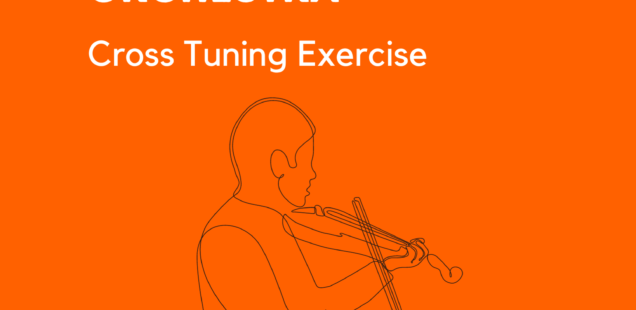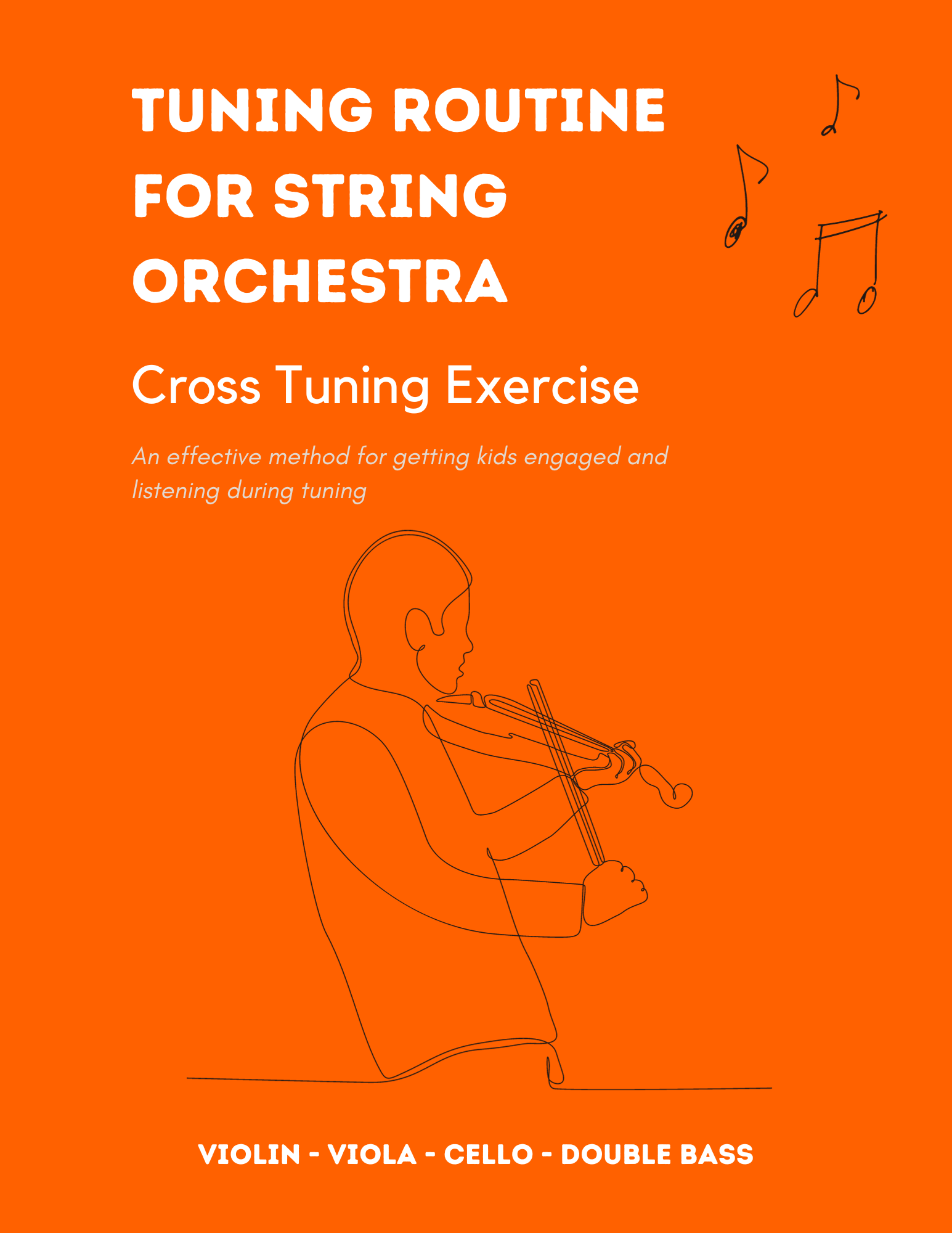
A Quick and Effective Method for Tuning Your Orchestra – Cross Tuning
Time is precious in our classrooms.
A common lament among many music educators is that there is never enough time in a period to cover all that we want or need to cover during class.
In order to maximize time in our classrooms we all rely on routines and procedures for students.
One area that I’ve found that I can quickly engage students and get the class moving is in the first few minutes of tuning.
Since reading about the concept of cross tuning several years ago in Christopher Selby's fantastic book Habits of a Successful Orchestra Director - I started employing this method of tuning in class. I love it as it’s quick, effective, and gets kids engaged right away. I also wrote about it on the blog back in 2019. You can read that article here.
I love this method because kids are involved throughout the whole process and if done correctly students should be actively listening and adjusting their pitch during the whole process. Another benefit is that it trains students to hear and internalize the interval of a fifth against one another. One of the keys to tuning independently. Of course, some teaching has to happen before introducing the exercise such as recognition of flat versus sharp and which way to adjust your fine tuner and/or tuning pegs, but once kids are able to begin this process rather than having it be solely teacher driven - it's a win-win for everyone.
I will give a little more detail below in a moment on how you can use it in your classroom.
The Method Explained
First, start by sounding a reference pitch ‘A’ from a drone or piano. Every member of the orchestra should now tune their ‘A’ making sure to play softly so they can adjust and hear the actual pitch. Once everyone agrees on the tuning - you move on in the process. This is the cross tuning part.
Next, violins and violas should sound the ‘A’ as cellos and basses move to ‘D’. Cellos and basses should then tune their ‘D’ string. Once the pitch is tuned up - they should switch with the upper strings.
After this, the cellos and bass can sound ‘D’ as the violins and violas tune their G strings. Continue to alternate strings and instrument sections until everyone has been tuned up.
As I stated above, I wrote an even more in depth dive into the process on the blog back in 2019. You can check it out here.
Challenges
There are some challenges that often come up during the process that you may need to watch out for.
I’ve found students need to be reminded often to play softly during this process. Secondly, students often need help identifying whether they are out of tune. They need practice identifying whether they are high or low regarding their tuning pitch. This takes practice and repeated lessons. That's okay because they are hearing the intervals and beginning to internalize them.
Conclusion
This method of tuning has really focused my classroom tuning process for the last several years. I’ve found it to be quick, engaging, and effective.
Feel free to experiment with this idea at any level, but I would say that it works well for the intermediate to advanced level string orchestra where students are beginning to be independent in tuning their instruments.
If you would like a written version of this for your string orchestra I made an incredibly helpful and quick score that you and all your students can follow on my Teachers Pay Teachers page. It’s really streamlined the tuning process and I’ve used it every day so far this year with a lot of success.
Tuning Routine for String Orchestra - Cross Tuning Exercise
The Tuning Routing for String Orchestra - Cross Tuning Exercise is an effective tuning routine for getting all of your students engaged, listening, and developing the skills to tune independently!
I've been using this method for years now since I first learned about it and decided to write out my own version for my students.
This method is fast, effective, and engaging for all students.
Students should just read their staff and follow each written note and direction. The method is based on tuning in 5ths and will help your students learn that important tuning interval - the sound, and feel of "being in tune."
From here, it is much easier to help them learn how to tune independently.
